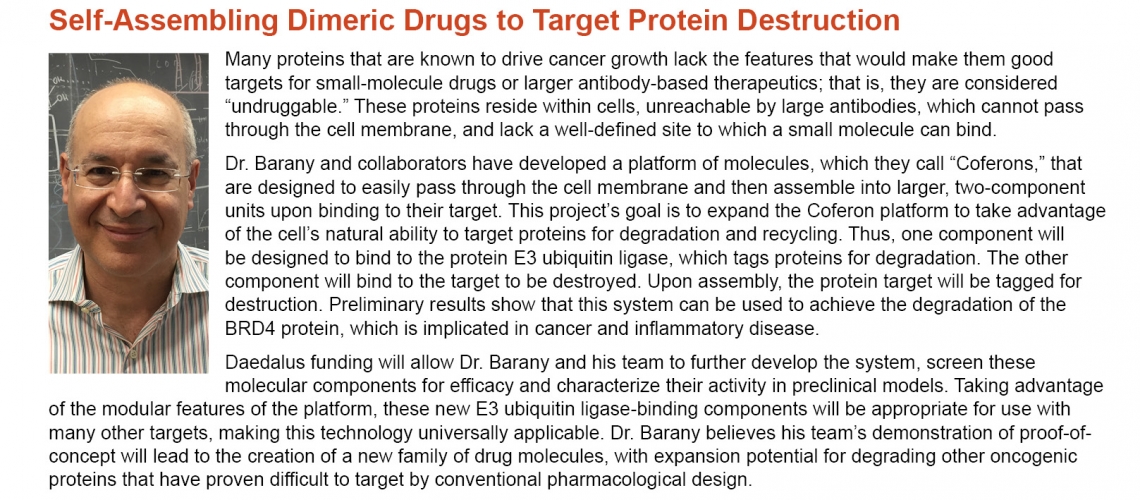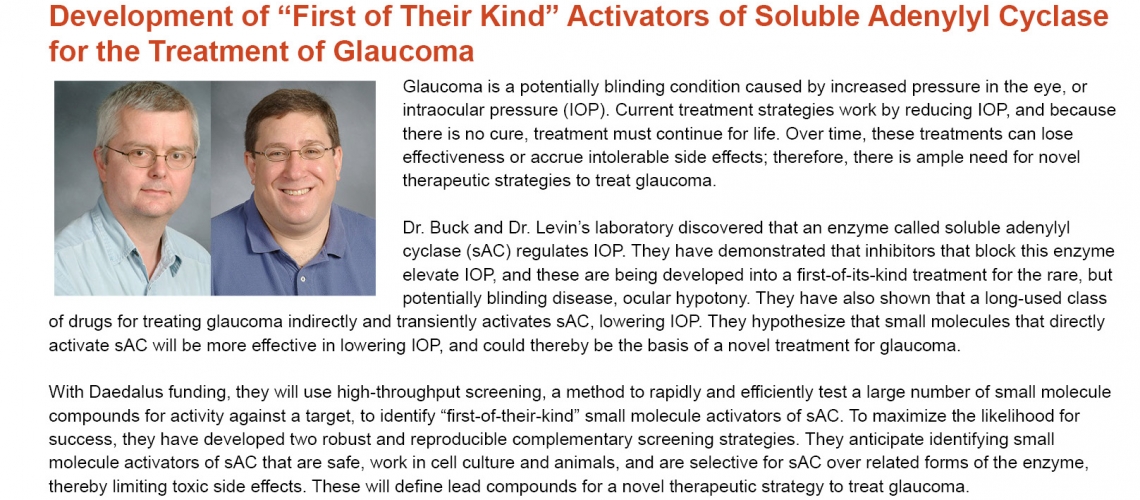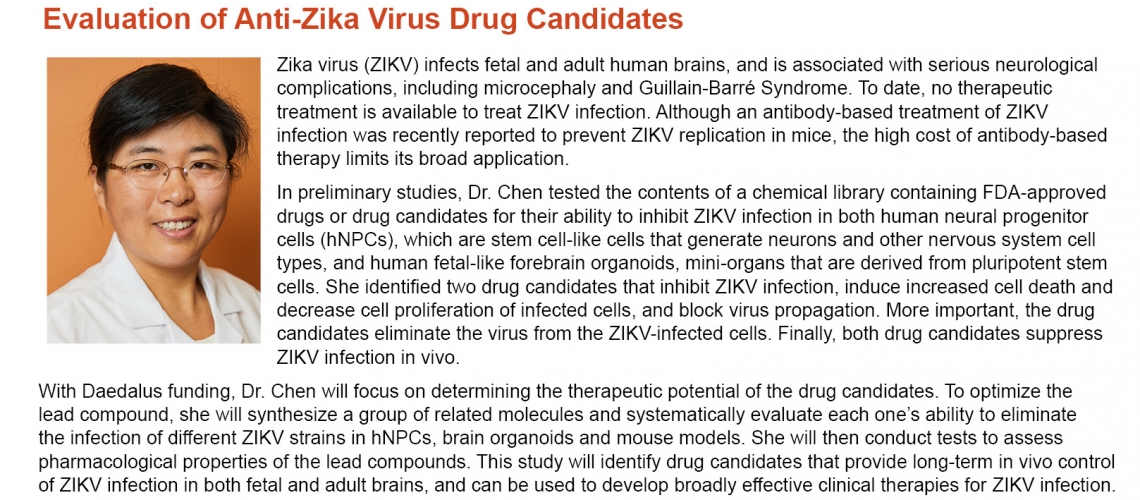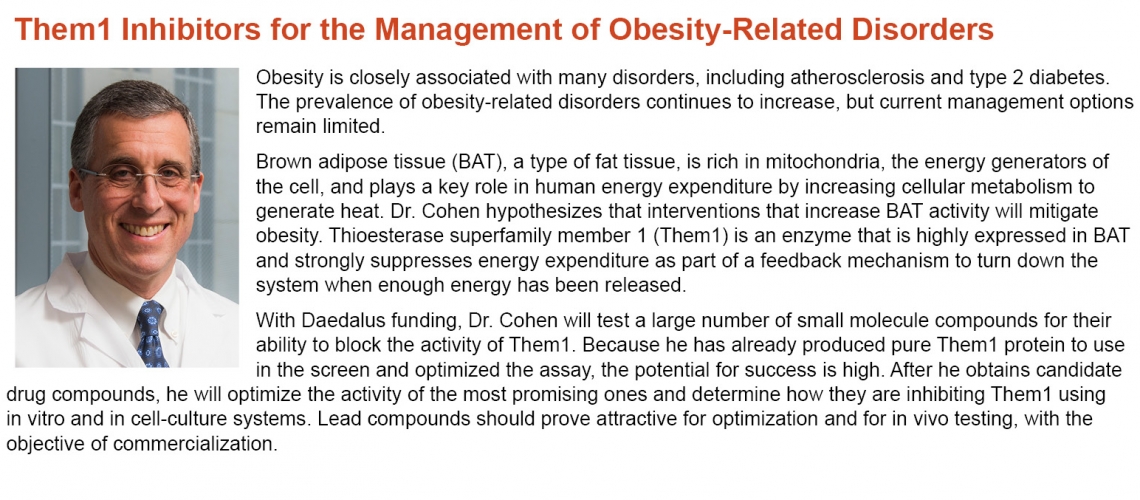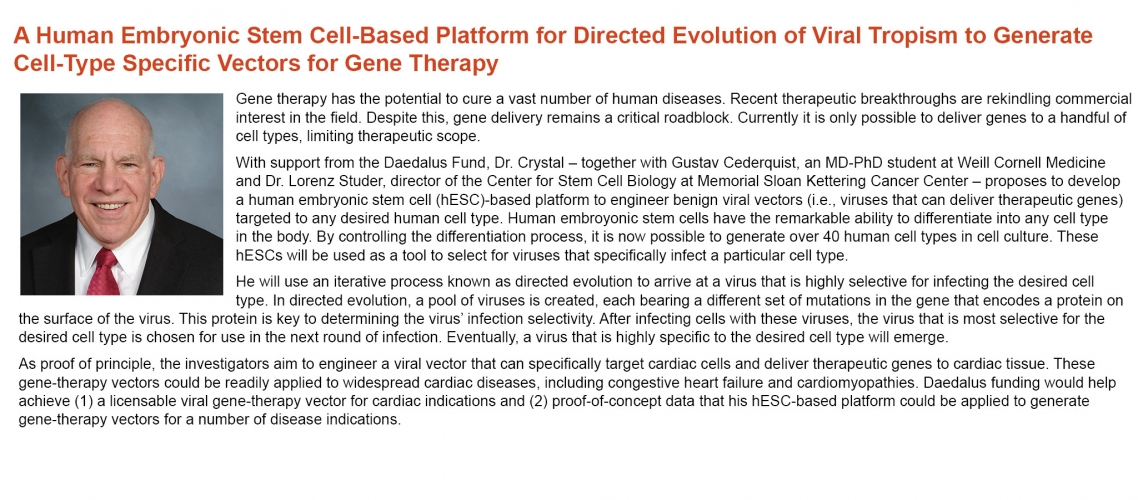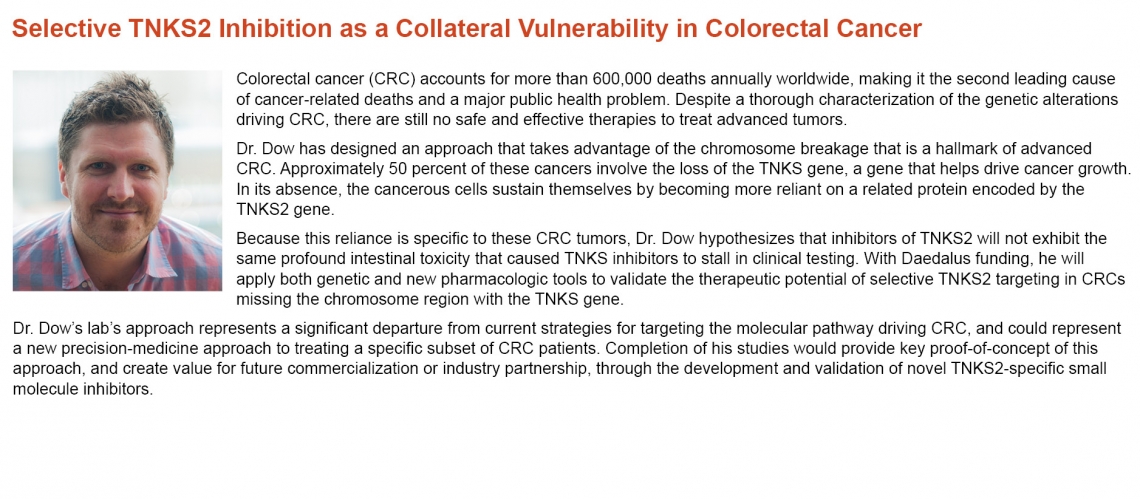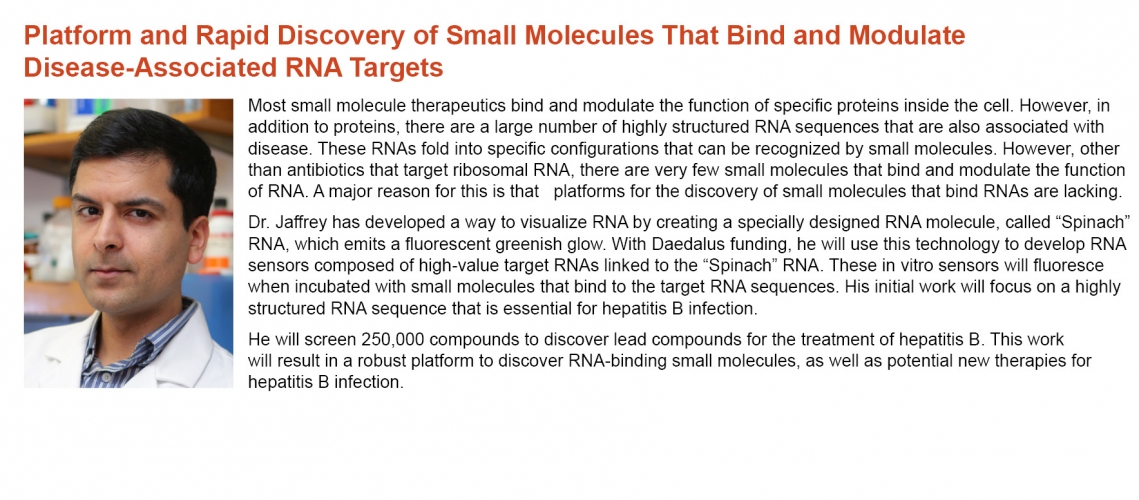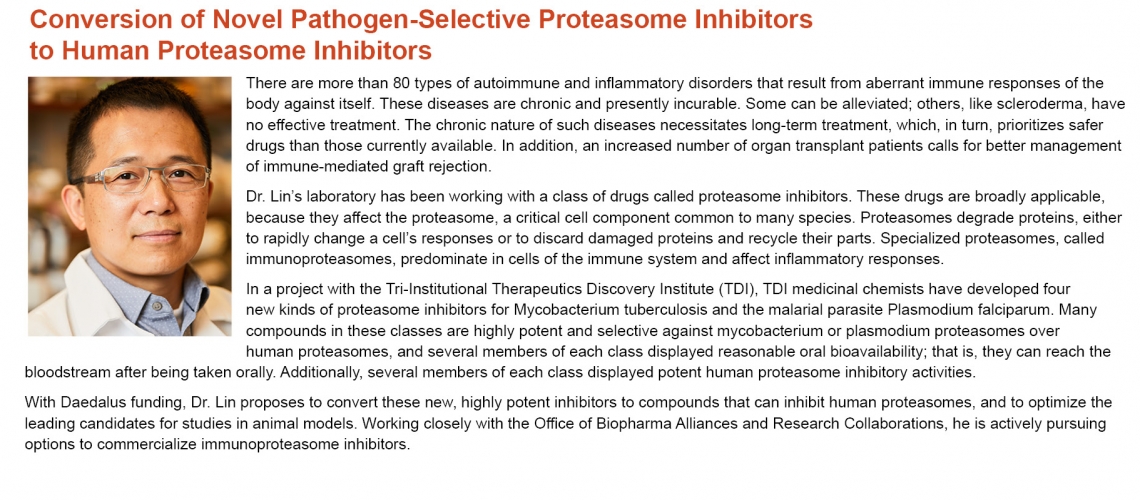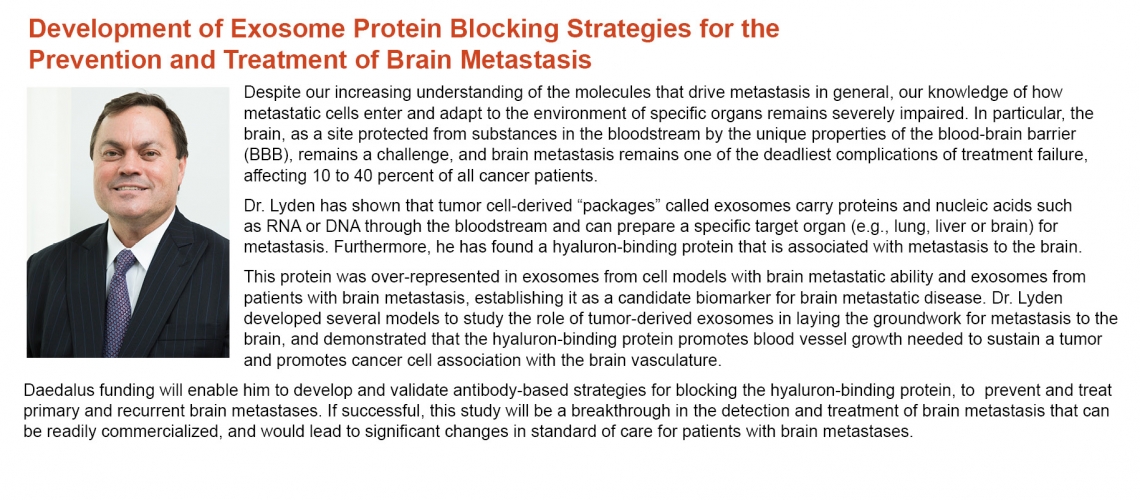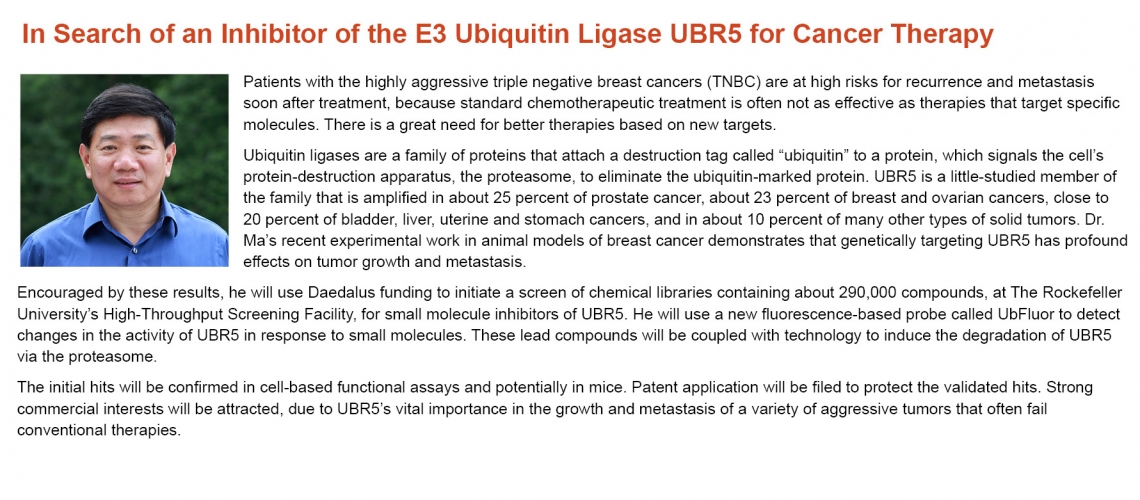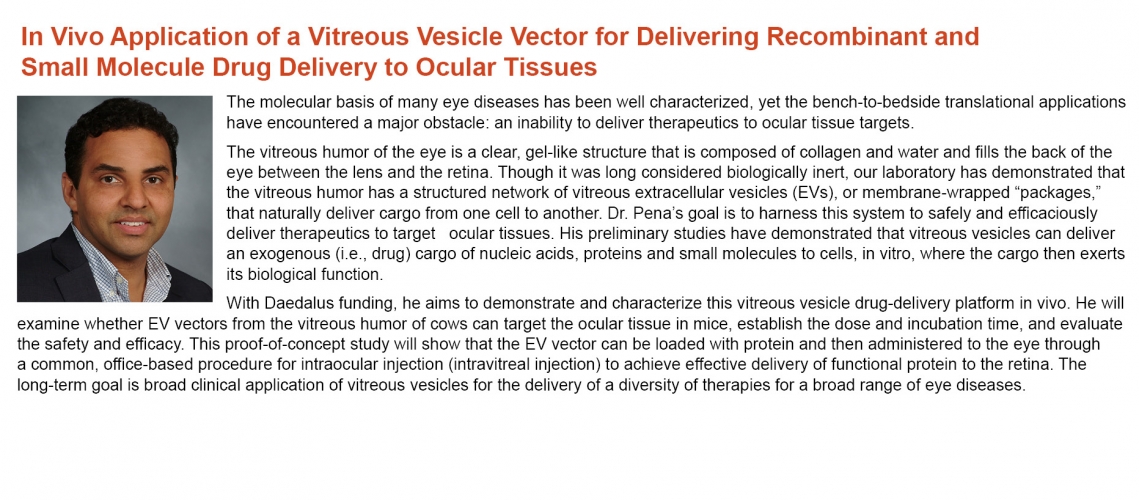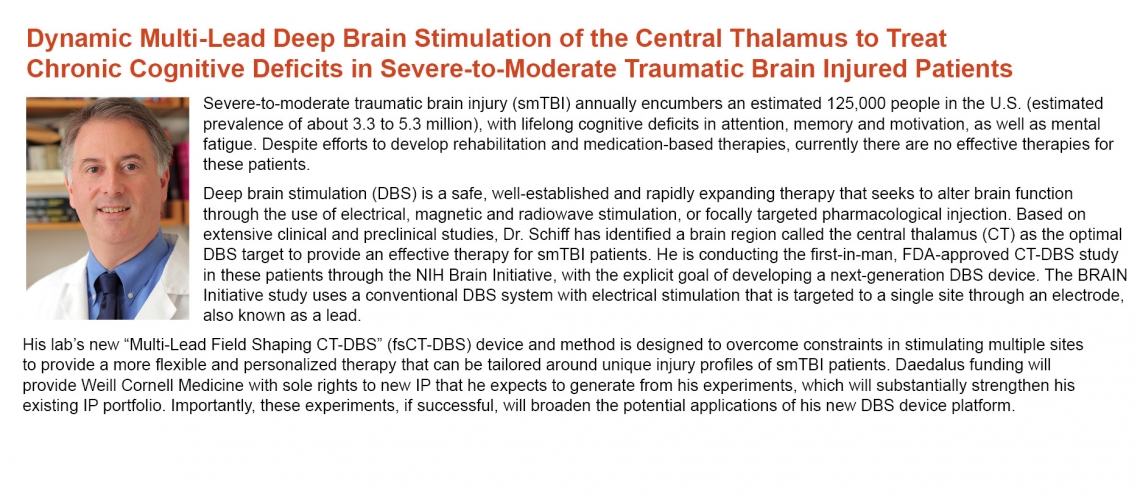Fifteen winners (fourteen projects) have been selected for the fourth round of the Daedalus Fund for Innovation awards, a pioneering Weill Cornell Medicine program that helps advance promising applied and translational research projects and emerging technologies that have commercial potential.
In an expansion of the program, winners are now selected twice annually and are eligible for two levels of funding: $100,000 and $300,000 (the latter, subject to the satisfaction of certain specified pre-defined milestones).
The researchers — Drs. Francis Barany, Jochen Buck in collaboration with Lonny Levin, Ethel Cesarman, Shuibing Chen, David Cohen, Ronald Crystal, Lukas Dow, Katherine Hajjar, Samie Jaffrey, Gang Lin, David Lyden, Xiaojing Ma, John Pena, and Nicholas Schiff — have each won a Daedalus award to fund proof-of-concept studies that will enhance the data package, thereby helping to upgrade their technologies and translate their early-stage discoveries into new therapeutic modalities and hopefully more effective treatments for patients.
The fund’s independent external Scientific Advisory Committee, comprised of seasoned technology analysts from the biopharmaceutical and venture capital industries, selected the projects.
“The Daedalus Fund helps our investigators bridge the ‘development gap’ and accelerate their projects to the point at which they are strong candidates for business development and licensing,” said Larry Schlossman, managing director of BioPharma Alliances and Research Collaborations at Weill Cornell Medicine, who manages the Daedalus Fund. “By providing philanthropic support at this critical juncture, we are helping to advance early-stage research projects that have significant commercial potential.”

